Today, thanks to relatively recent improvements in bio-sensor technology, and an increased focus on the treatment of stress-related disorders, we have an exciting tool that has shown great promise in reducing or alleviating the symptoms of chronic stress and anxiety.
Neurofeedback offers a method of improving the lives, and well-being of patients suffering from a variety of mental health conditions including chronic stress, anxiety, depression, attention deficit disorder, and others.
So let’s take a deeper look at this effective therapeutic tool, and how we may be able to significantly relieve stress with Neurofeedback.
What Is Neurofeedback?
Before we go any further, it is important to make sure that we understand the basic principles of Neurofeedback, and how it affects the human brain. Neurofeedback involves the use of the brain’s own electrical charges to essentially retrain or reprogram the brain to work in a more productive, regulated manner.
Neurofeedback therapy begins by attaching high-tech biosensors to key areas of the patient’s body to assess the level and pattern of current brain electrical activity in a variety of scenarios. The data from these sensors is then filtered into easy-to-recognize patterns by a computer program, allowing both the patient and the therapist to observe the way that the individual’s brain responds to various external and internal stimuli.
Benefits of Neurofeedback
Traditionally, we have relied on “talk” therapy and medication to help alleviate, or reduce the most troubling symptoms of various mental health struggles. While both medication and guided discussion have real-world value, neurofeedback offers another tool to help benefit patients on their journey to better mental health.
(Click the image to enlarge)

Individualized Treatment
Neurofeedback is an interactive tool that makes use of advanced bio-sensor technology, combined with the patient’s own cognitive effort to retrain the brain to function in a more regulated, and productive manner.
Long-lasting Results
Because the patient is using their own brain power to create new cognitive pathways, these results are far more likely to become ingrained, creating stable, long-lasting changes in the patient’s thought processes and responses. The self-efficacy of Neurofeedback therapy has shown great results in providing a more long-lasting solution to aid patients in creating significant, lasting change without reliance on long-term medication.
How To Relieve Stress With Neurofeedback
Stress is a fact of life. It can be both beneficial and damaging. Stress motivates us to avoid danger, or to create security, both of which are vital to our survival. However, the stress in our lives can become overwhelming when we have too much on our plate, or when we are unable to regulate our internal stress response. When this happens, we can quickly spiral into states of anxiety, depression, or other maladaptive, and unpleasant mental patterns.
Neurofeedback can help to reprogram our mind’s natural response to stress. Through neurofeedback analysis and training, the patient can be guided to retrain to react in a more positive, regulated, and productive manner to external and internal stressors.
Is It Safe To Relieve Stress With Neurofeedback?
Neurofeedback is not only effective it is also incredibly safe. Don’t let the name or the technology make you nervous, it looks far more complex than it is. In fact, because Neurofeedback therapy is a non-invasive, and non-medication-based treatment it is one of the safest therapeutic options available for managing, or alleviating the symptoms of many mental health conditions that exist today.
Non-invasive Treatment
A neurofeedback session begins by painlessly affixing electrodes to the patient’s scalp to measure electrical waves in various areas. These electrodes are used for measurement of the patient’s existing brain wave activity only. They do not provide any stimulation of their own.
The biosensor electrodes listen to the electrical waves produced by the brain and relay the information back to a computer processing program that analyzes the incoming data and translates it into a virtual map of the patient’s current brain wave patterns. The therapist then uses the program to discover information about key brainwave frequencies providing a roadmap to how different areas of the patient’s brain are functioning under various conditions.
Retraining the Brain
Neurofeedback sends brief microcurrent stimulation to corresponding signals of brain wave activity, muscle activity, skin temperature, etc allowing the brain to reorganize itself and allow for reeducation in physiological parameters. It utilizes a prescription battery-powered device to the nervous system, resulting in a temporary fluctuation in brainwaves.
“Neurofeedback does not train the brain like traditional neurofeedback; rather it “retrains” the brain and CNS (central nervous system) by allowing it to reorganize itself and shift from its formerly fixed patterns. This is analogous to re-booting a computer.” – IASIS Nerofeedback Technologies [1]
Targeted Results
The particular areas of the brain to target, and the recommended activities are highly-individualized to each patient in order to produce highly-targeted results. The brainwaves determine how much the client receives each session, and it may vary from session to session.
Best of all, because the patient is essentially using the power of their own mind to effect the necessary change, neurofeedback therapy tends to produce results that are far more long-lasting, and stable than other therapeutic treatment options.
(Click the image to enlarge)

Is Neurofeedback Right For You?
Interested in learning more about the exciting results being produced with neurofeedback treatment? I would love to meet with you, discuss your unique circumstances, and provide honest answers about whether neurofeedback is a good option for you.
Treatment of Symptoms
Neurofeedback has been used to help reduce, or alleviate the symptoms associated with a number of mental and physical ailments including:
- ADD/ADHD
- Chronic Fatigue Syndrome
- Depression
- Epilepsy
- Fibromyalgia
- Chronic Headaches
- Insomnia
- Traumatic Brain Injury (TBI)
- Lyme Disease
- Memory Disorders
- Migraines
- Dissociative Disorders
- Psychological Disorders
- PTSD
- Stroke
- Vertigo
- Tinnitus (ringing in the ears)
Next Steps
As a certified neurofeedback provider, I have had great success using neurofeedback therapy to help my patients thrive. Sign up for a free complimentary session to find out if neurofeedback can help you today!
I am here to help! Hope and healing begin today.
Resources:[1] IASIS Neurofeedback Technology https://microcurrentneurofeedback.com/what-is-neurofeedback/



